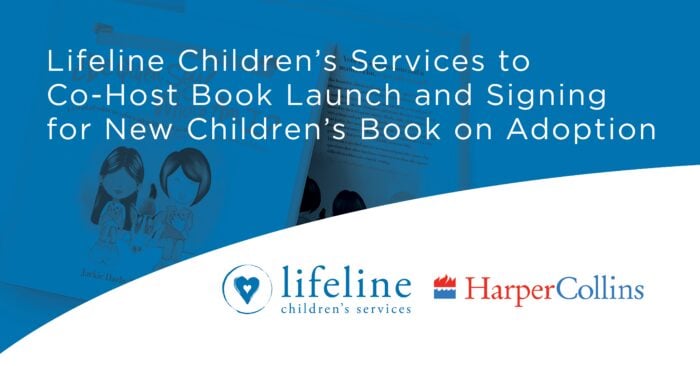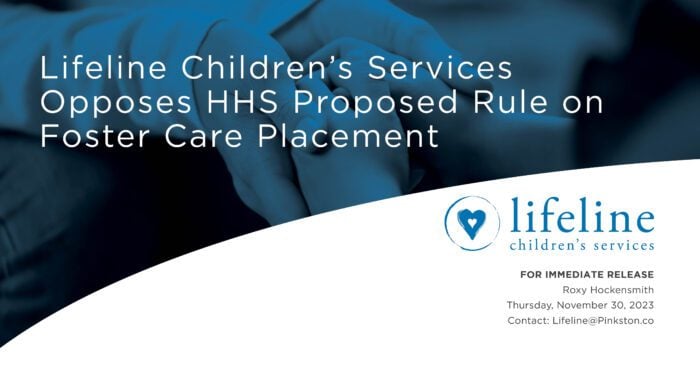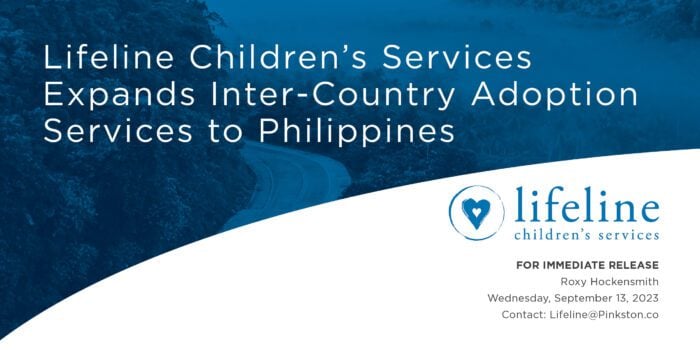Suicide Ideation
Of all of the struggles parents can face with their children, few illicit the same level of fear that comes with suicidal ideation. Talking about suicide is hard and uncomfortable, but necessary, so we ask that you bear with us as we share some hard information with you. Suicidal thoughts, also called suicidal ideation, can range from brief, fleeting thoughts to a fully constructed plan to carry out the suicidal act. Most people who have suicidal thoughts do not go on to make suicide attempts, but it is considered a risk factor.
Research indicates that youth in foster care and adopted youth are more likely than their peers to think about, attempt, and/or die by suicide. Children who have spent time in the foster care system are nearly two and a half times more likely to seriously consider suicide and are nearly four times more likely to attempt suicide than other youth (“Preventing Suicidal Behavior,” 2014). Children and adolescents who have been adopted are four times more likely to attempt suicide than non-adopted children (“Preventing Suicidal Behavior,” 2014). The statistics, however, do not cast blame on children from hard places, but on the environment and difficulties they have faced and more specifically on the separation that precedes the placement.
FACTORS INFLUENCING SUICIDAL IDEATION:
Research describes reasons for the high percentage of suicidal ideation and suicidal attempts for children and adolescents who were adopted or in foster care:
- Attachment/ Loss: Children from hard places have likely suffered many losses in their life. These include the initial separation from one’s mother, multiple broken attachments and relationships, moving from multiple homes, or even moving countries, etc.
- Early exposure to family conflict and dysfunction
- Poor coping skills
- Childhood abuse, trauma, or neglect: Experiencing childhood abuse or trauma increased the risk of attempted suicide by 5 times. One study found that approximately two thirds of suicide attempts may be attributable to abusive or traumatic childhood experiences. Among 8-year-olds who were maltreated or at risk for maltreatment, nearly 10% reported wanting to kill themselves (“Preventing Suicidal Behavior.” 2014).
- Early exposure to substance abuse
- Social isolation: Children and adolescents from hard places often struggle to trust family or friends. They don’t want to upset their foster or adoptive parents with concerns about depression and may not feel safe opening up about how they are feeling.
- Lack of medical history: Children from hard places lack a complete and accurate, up-to-date medical history which may include a history of mental illness or suicide.
There is hope. Research indicates parents can foster and nurture resilience in their children by surrounding them with support and teaching them the skills needed to deal with adversity in their lives. Parents can begin this supportive care by being aware of the warning signs of suicide and how to respond. This will give the optimum support to their children.
Warning signs:
It is critical that parents and professionals know the warning signs that a child may be considering suicide. These warning signs are an indication to parents and professionals a child needs help. Parents and professionals need to be proactive when they see any warning signs. These warning signs can include but are not limited to:
- Feelings of hopelessness
- Anxiety, agitation, trouble sleeping, or sleeping too much
- Expressions of having no purpose or reason for living
- Feelings of being trapped – like there’s no way out
- Alcohol and/or drug use
- Withdrawal from friends, family, and community
- Rage, uncontrolled anger, seeking revenge
- Reckless behavior or more risky activities
- Dramatic mood changes
- Giving away of possessions
- Threatens or talks of wanting to hurt or kill him or herself
- Looking for ways to kill him or herself by seeking access to firearms, pills, or other means
- Talking or writing about death, dying, or suicide.
Responding to warning signs:
- Ask the child: Are you thinking about killing yourself?” “Do you have a plan?” Talking about suicide does not cause suicide. If you have difficulty asking, enlist another adult to help you. Call your social worker or counselor and they can help you have this conversation.
- Stay with the child: Don’t leave the child or teen alone.
- Move lethal means out of harm’s way: If there are firearms, medications, or other means of suicide in the home, remove them until the crisis has passed. Make inaccessible anything that might be used in an impulsive moment.
If a youth has suicidal thoughts or plans, get help immediately from a mental health professional, a hospital emergency department, or 911.
How to Respond to suicidal ideation:
Responding to suicidal ideation in children involves a diverse range of interventions including building attachment and trust, providing effective mental health treatment, equipping them with coping skills, and reducing access to the means of suicide. Children need to feel that they have “permission” to talk about their feelings and that it is safe to ask ANY questions without hurting their foster or adoptive parents and risking being rejected, again.
Practical reminders and suggestions for responding:
Parents and professionals should:
- Listen and validate their sadness as normal and natural: Show your concern and support without judgment.
- Create an open atmosphere: let them know that it is okay for them to wonder and question, or to feel and express emotions.
- Help the child develop positive peer relationships and support
Practical reminders continued:
- Encourage their personal interests and hobbies: Find something that they enjoy and can bolster self-esteem.
- Encourage regular physical activity
- Get them involved in a larger community
- Seek counseling that encourages healthy expression and understands foster care and adoption related issues
- Reduce access to lethal objects: Remove lethal objects from the child’s awareness and availability including alcohol, firearms, medication, knives, etc.
- Take talk of suicide seriously: It is scary and hard for parents to believe their child could be serious about suicide. However, parents do not want to take any risks. It is widely known that most adolescents or adults who take their lives have communicated intent beforehand, either blatantly or subtly. Additionally, most people will admit to their feelings if questioned directly.
- Know the warning signs: (see above)
Develop a safety plan for the child and family:
A safety plan for a child should include when to use the plan, what they can do to calm themselves if they are feeling suicidal, who they can talk to, who they can call for professional assistance, how they can make their environment safe, and what to do if they are still feeling unsafe after taking these steps. The family safety plan can address these questions based on what they should do if they notice their child in distress or if their child vocalizes distress to them.
CONCLUSION:
Parents do not need to go through this alone. Parents need to utilize their own support system and be willing to reach out for help. Parents should identify trusted family members and friends who can walk alongside them through these serious concerns. Additionally, parents need to develop a relationship with professionals such as a social worker, counselor or therapist who can help them navigate their concerns with professional expertise.
The main message of this research is that communication and the sense of satisfaction the child or adolescent has within the family relationship is critically important. With adolescents especially, remember that even though they may seek individuality, they actually need more support and involvement from parents than ever before. We hope that the information provided here does not increase your anxiety or fear. Being part of a close-knit family appears to lower the risk of suicide for all children. Although research shows that children who have been adopted or are in foster care may have a higher incidence of suicidal ideation or attempts, the significant majority of children and adolescents in foster care or who have been adopted are not suicidal. Our desire is that this information will not only bring awareness, but will ultimately help you feel capable and assured that you have the knowledge and tools to respond appropriately and help bring healing to your child.
References:
Cohen, M. Adoption and Suicide Risk. Retrieved from http://www.attachmentandtraumaspecialists.com/articles/adoption_and_suicide_risk.
Myths About Suicide. Retrieved from http://tspn.org/myths-about-suicide.
Preventing Suicidal Behavior Among Youth in Foster Care. Retrieved from http://www.mhawisconsin.org/Data/Sites/1/media/Prevention/oneswemiss/oof—preventing-suicidal-behavior-among-youth-in-foster-care-august-2014.pdf.
Riben, Mirah. (2015, September 14). Toward Preventing Adoption-Related Suicide. Retrieved from http://www.huffingtonpost.com/mirah-riben/toward-preventing-adoptio_b_8127882.html.
Rostler, Suzanne. (2001). Suicide Attempts More Common Among Adopted Teens. Retrieved from https://www.adoptionhealing.com/Suicide.htm.
Developed by: Megan Davis, MS, LBSW References: Cohen, M. Adoption and Suicide Risk. Retrieved from http://www.attachmentandtraumaspecialists.com/articles/adoption_and_suicide_risk. Forbes, H.T. (2008). Beyond Consequences, Logic, and Control: A Love Based Approach to Helping Children with Severe Behaviors. Boulder, CO: Beyond Consequences Institute. Forbes, H.T. (2009). Dare to Love: The Art of Merging Science and Love into Parenting Children with Difficult Behaviors. Boulder, CO: Beyond Consequences Institute. Gindis, B. (2012, April). Post-Orphanage Behavior in Internationally Adopted Children. Retrieved from http://www.bgcenter.com/BGPublications/OrphanageBehavior.htm.Macrae, S. MacLeod, J. & Pertman, A. (2006). Adoption Parenting: Creating a Toolbox, Building Connections. Warren, NJ: EMK Press. Mayo Clinic Staff. (2015, December 9). Self-injury/Cutting. Retrieved from http://www.mayoclinic.org/diseases-conditions/self-injury/home/ovc-20165425.Orlans, M. & Levy, T. (2006). Healing Parents: Helping Wounded Children Learn to Trust & Love. Washington DC: Child Welfare League of America, Inc.Post Adoption Information: Frequently Asked Questions. Retrieved from http://www.postadoptinfo.org/faqs/Riben, Mirah. (2015, September 14). Toward Preventing Adoption-Related Suicide. Retrieved from http://www.huffingtonpost.com/mirah-riben/toward-preventing-adoptio_b_8127882.htmlRostler, Suzanne. (2001). Suicide Attempts More Common Among Adopted Teens. Retrieved from https://www.adoptionhealing.com/Suicide.htm.




